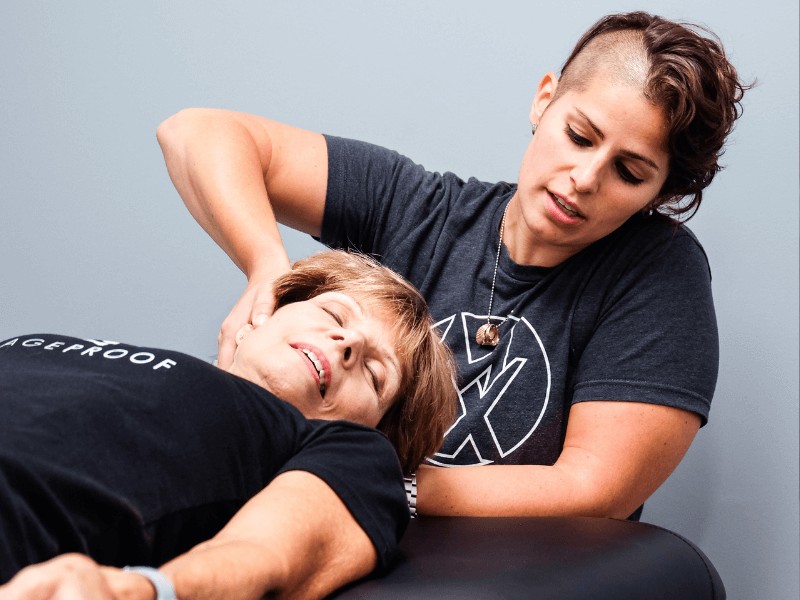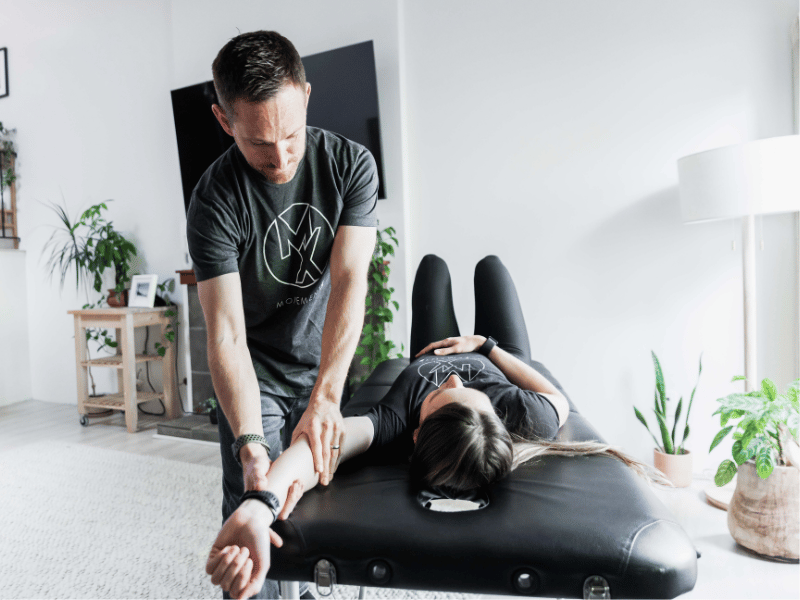Understanding and Overcoming BPPV: Your Path to Balance and Stability after Vertigo
If you've ever felt the unsettling sensation of the world spinning around you unexpectedly, you're not alone. Benign Paroxysmal Positional Vertigo (BPPV) is a common vestibular disorder that can make such experiences a part of daily life for those affected. It's a condition characterized by brief episodes of vertigo, often triggered by changes in head position, making seemingly simple tasks daunting.
Why is BPPV relevant? For starters, it's one of the most common causes of vertigo. The condition affects people of all ages, but it's most prevalent in adults over 50 years old. According to clinical practice research guidelines, BPPV is responsible for approximately 17-42% of all vertigo cases seen in clinical settings (Bhattacharyya et al).
The impact of BPPV extends beyond physical discomfort; it can significantly affect one's quality of life, leading to disruptions in daily activities, work, and even personal safety. However, the good news is that BPPV is also one of the most treatable vestibular disorders. With the right information and care, many can regain their balance and stability, returning to their everyday lives with confidence.
This article is your guide through the dizzying world of BPPV. Whether you're seeking to understand your own symptoms, looking for ways to support a loved one, or simply curious about this condition, you'll find valuable insights here. We'll also explore the latest evidence-based treatments and practical tips for managing and overcoming this condition.
By the end of this article, you'll have a clearer path to balance and stability, empowering you to move forward with greater confidence and less fear of vertigo. So, let's take this journey together and turn the page on BPPV.
What is BPPV?
Benign Paroxysmal Positional Vertigo (BPPV) is a condition that strikes at the core of one's sense of balance and spatial orientation, leading to brief but intense episodes of dizziness or vertigo. These episodes are typically triggered by changes in the position of the head, such as looking up, bending over, or turning in bed. Despite its unsettling effects, the term "benign" signifies that the condition is not life-threatening, though it can significantly impact one's daily life.
At its core, BPPV is a mechanical problem in the inner ear. It occurs when tiny calcium carbonate crystals, known as otoconia, detach from their usual location and migrate into one of the semicircular canals, where they don't belong. When the head moves, these misplaced crystals shift, sending confusing signals to the brain about the body's position. This miscommunication results in the vertigo and balance disturbances characteristic of BPPV.
The impact of Benign Paroxysmal Positional Vertigo on quality of life cannot be understated. For those affected, simple activities such as getting out of bed, looking up to reach for something, or even bending down can become daunting tasks. The unpredictability of vertigo episodes can lead to anxiety about performing everyday activities, potentially resulting in social withdrawal, decreased activity levels, and a diminished overall quality of life.
In defining BPPV, it's crucial to understand that it is both a specific and diagnosable condition that affects the inner ear's vestibular system, which helps control balance. While BPPV is particularly noted for its episodic nature, with vertigo spells lasting typically less than a minute, the condition's impact extends far beyond these brief moments, affecting individuals' ability to function at their best physically and emotionally.
Symptoms of Benign Paroxysmal Positional Vertigo
Benign Paroxysmal Positional Vertigo (BPPV) is characterized by specific symptoms that stem from its effect on the vestibular system of the inner ear. The hallmark symptom is a sensation of spinning or movement that can significantly disrupt an individual's equilibrium. These symptoms are typically episodic, with each episode lasting from a few seconds to a minute. Understanding the range of symptoms associated with BPPV is crucial for recognizing and managing this condition effectively.
Here is a comprehensive list of symptoms frequently associated with BPPV, keeping in mind that their presence and severity can vary from person to person:
- Brief episodes of vertigo: Individuals with BPPV often experience sudden, intense feelings of spinning or movement. These episodes are usually triggered by changes in the position of the head, such as turning over in bed, tilting the head up or down, and sometimes even by lying down or sitting up.
- Dizziness: Apart from vertigo, a general feeling of dizziness or light-headedness can occur, potentially affecting balance and stability even in the absence of full vertigo episodes.
- Nausea: The disorienting sensations of BPPV can lead to nausea, with or without vomiting, as the body reacts to the perceived spinning.
- Balance issues: Challenges with maintaining balance or walking straight are common, especially immediately following a vertigo episode. These issues can make tasks that require precise movements or coordination particularly difficult.
- Nystagmus: This involuntary eye movement, where the eyes rapidly move from side to side, is often observed during vertigo episodes caused by BPPV. It is a physical sign that healthcare providers, including physical therapists, use to identify the condition.
- Lightheadedness: Some individuals may experience a feeling of faintness or being unsteady, distinct from the intense vertigo spells.
- Head movement sensitivity: Sensitivity to head movements is a hallmark of BPPV, where even minor adjustments in head position can trigger symptoms.
If you or someone you know is experiencing these symptoms, especially if they are recurrent or severe, seeking medical advice is essential for proper diagnosis and management.
Causes of BPPV
While the exact cause of BPPV can sometimes remain unclear, various factors are frequently associated with its development. It's important to recognize that these factors may increase the likelihood of experiencing BPPV but are not direct causes in every case.
Here are common causes or risk factors associated with BPPV:
- Aging: Age is a significant factor, with BPPV more commonly occurring in individuals over the age of 50. The degeneration of inner ear structures as part of the aging process can potentially lead to the dislodgement of otoconia, the tiny calcium carbonate crystals.
- Head injury: Trauma to the head can dislodge the otoconia from their usual position in the utricle, causing them to migrate into one of the semicircular canals where they can induce vertigo.
- Inner ear infection or disorders: Conditions that affect the inner ear, such as vestibular neuritis or labyrinthitis, may contribute to the onset of BPPV by altering the environment in which the otoconia reside.
- Prolonged bed rest: Extended periods of lying down can facilitate the movement of otoconia into the semicircular canals, particularly if the head is kept in a stationary position for a long time.
- Vitamin D deficiency: Recent studies suggest a potential link between vitamin D deficiency and BPPV. Vitamin D plays a role in calcium regulation, which could affect the otoconia.
- Osteoporosis: Similar to vitamin D deficiency, osteoporosis affects bone density and calcium regulation, which may have implications for the otoconia and their propensity to dislodge.
- Other risk factors: Factors such as migraines, allergies, and genetic predispositions have been explored for their potential association with BPPV, though the connections are less clearly defined.
Understanding these risk factors is crucial for recognizing the potential triggers of BPPV and adopting preventative measures where possible. However, it's also important to acknowledge that BPPV can occur spontaneously without a clear precipitating factor. If you suspect you are experiencing symptoms of BPPV, consulting with a healthcare professional can help determine the most likely cause and appropriate treatment plan.
Treatment Options for BPPV
Effective management of Benign Paroxysmal Positional Vertigo (BPPV) involves a variety of treatment options tailored to your symptoms and underlying cause of vertigo. The goal of treatment is to alleviate symptoms, improve balance, and minimize the impact of vertigo on daily life.
Below are several treatment approaches for BPPV, ranging from home exercises to physical maneuvers performed by a specialized physical therapist.
- Canalith Repositioning Maneuvers: The most common and effective treatment for BPPV involves specific movements known as canalith repositioning maneuvers, such as the Epley maneuver or Semont maneuver. These maneuvers are designed to move the dislodged otoconia from the semicircular canals back to the utricle, where they can no longer cause vertigo. Performed by our physical therapists, these maneuvers can provide rapid and lasting relief from symptoms.
- Vestibular Rehabilitation Therapy (VRT): VRT is a specialized form of physical therapy aimed at improving balance and reducing dizziness-related problems. It includes a series of customized exercises that help the brain compensate for the imbalance in the inner ear, addressing symptoms of BPPV as well as vestibular disorders more broadly.
- Medication: While medication does not treat the root cause of BPPV, it may be used temporarily to relieve symptoms such as nausea and severe dizziness. Medications commonly prescribed include antiemetics and antihistamines. However, they are typically not used as a long-term solution for BPPV.
- Surgery: In rare cases where BPPV is persistent and does not respond to other treatments, surgery may be considered. One surgical option is a procedure called a posterior semicircular canal occlusion, which blocks the affected canal to prevent the dislodged crystals from causing vertigo. Surgery is generally seen as an absolute last resort due to the risks and potential for complications.
- Home Exercises: In addition to professional treatment, certain exercises can be performed at home under the guidance of a healthcare provider or physical therapist. These exercises are meant to further assist in managing symptoms and preventing recurrences.
Physical therapy, particularly through canalith repositioning maneuvers and vestibular rehabilitation, plays a pivotal role in treating BPPV. It offers a non-invasive, effective approach to managing vertigo by addressing the condition's mechanical cause without the need for medication or surgery. In the next section, we will explore in depth the benefits of physical therapy for BPPV patients, highlighting how it not only alleviates immediate symptoms but also empowers individuals with strategies to manage potential recurrences and improve their overall quality of life.
How Physical Therapy can help BPPV
Physical therapy is a cornerstone in the management and treatment of Benign Paroxysmal Positional Vertigo (BPPV), offering a tailored approach that addresses the unique needs of each individual. Working with a skilled physical therapist can significantly enhance a patient's ability to manage or even overcome the symptoms of BPPV. The expertise of MovementX physical therapists in the field of vestibular rehabilitation allows us to employ specific techniques and approaches designed to alleviate the disorienting symptoms of vertigo, improve balance, and reduce the risk of recurrence.
One of the primary methods physical therapists use to treat BPPV is through canalith repositioning maneuvers, such as the Epley maneuver. These maneuvers are gentle yet effective, involving a series of specific head and body movements aimed at relocating the dislodged otoconia back to their original position. A physical therapist will carefully guide patients through these maneuvers, ensuring each movement is performed correctly and efficiently for optimal results. The precision of these maneuvers, combined with our understanding of vestibular anatomy, makes this treatment highly successful in resolving episodes of vertigo.
Beyond these maneuvers, physical therapists also develop customized vestibular rehabilitation programs. These programs are designed to help patients strengthen their balance systems, enhancing the brain's ability to compensate for inner ear issues. Rehabilitation may include exercises that focus on gaze stabilization, balance training, and coordination, all of which are crucial for restoring normal function and reducing the sensations of dizziness and imbalance. The gradual and progressive nature of these exercises ensures that patients build their capabilities at a pace that suits their individual recovery process.
Our Top 2 At-Home Techniques for Treating BPPV
Managing and treating Benign Paroxysmal Positional Vertigo (BPPV) at home can sometimes be effective with the right exercises and maneuvers. These two techniques are designed to help relocate dislodged crystals in the inner ear, alleviating the symptoms of vertigo. Based on our previously-written comprehensive article, here are some of our recommended at-home maneuvers you can try at home:
1. Epley Maneuver
This is perhaps the most well-known maneuver for treating BPPV, especially effective for vertigo related to the posterior canal. It involves a series of specific head and body movements to guide the dislodged crystals back to their original location in the ear.
2. Semont Maneuver
Similar to the Epley, the Semont Maneuver is another effective technique, but it involves a more rapid movement to achieve the desired effect of moving the crystals within the ear.
Remember, while these exercises can be incredibly beneficial, they are most effective when tailored to your specific condition and performed under the guidance of a healthcare professional. If you're experiencing vertigo, consult with a physical therapist to create a personalized treatment plan that's right for you.
Conclusion
As we conclude our journey through understanding and managing Benign Paroxysmal Positional Vertigo (BPPV), it's clear that this condition, while challenging, is highly treatable with the right approach and guidance. The discomfort and disorientation that come with BPPV don't have to be permanent fixtures in your life. With the proper maneuvers, exercises, and professional support, regaining balance and stability is within reach.
Consider the impact that BPPV has on your daily activities and quality of life. Are you ready to take the steps necessary to navigate your world more comfortably and confidently? How might your life change if vertigo no longer held you back from enjoying everyday moments and adventures?
We at MovementX understand the intricacies of BPPV and are dedicated to helping you overcome these challenges. Our team of skilled physical therapists is ready to work with you, offering personalized care tailored to your specific needs. Whether you're looking for guidance on performing vestibular rehabilitation exercises at home or seeking comprehensive treatment, we're here to support your path to recovery.
Don't let vertigo control your life. Take the first step towards balance and stability by requesting a session with MovementX today. Together, we can navigate the complexities of BPPV and help you return to the activities you love with confidence and ease.
Remember, your journey to overcoming BPPV starts with a single step. Are you ready to take it? Contact MovementX and reclaim your balance and your life.
References
- Bhattacharyya N, Gubbels SP, Schwartz SR, et al. Clinical Practice Guideline: Benign Paroxysmal Positional Vertigo (Update). Otolaryngology–Head and Neck Surgery. 2017;156(3_suppl):S1-S47. doi:10.1177/0194599816689667
About the Author
Dr. Morgan Stewart is a Doctor of Physical Therapy based in Bend, Oregon. She cherishes the opportunity to connect deeply with her patients and empower them to take control of their health and achieve their unique goals. Whether you’re dealing with chronic pain, injuries, balance issues, dizziness or other complex conditions like hypermobility or lymphedema, Morgan is here to help you get back to doing what you love.
Share This Page
More Conditions We Treat
Found this page interesting? Learn more about other conditions we treat:





